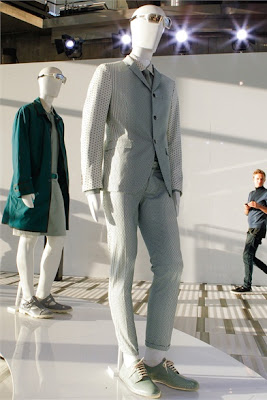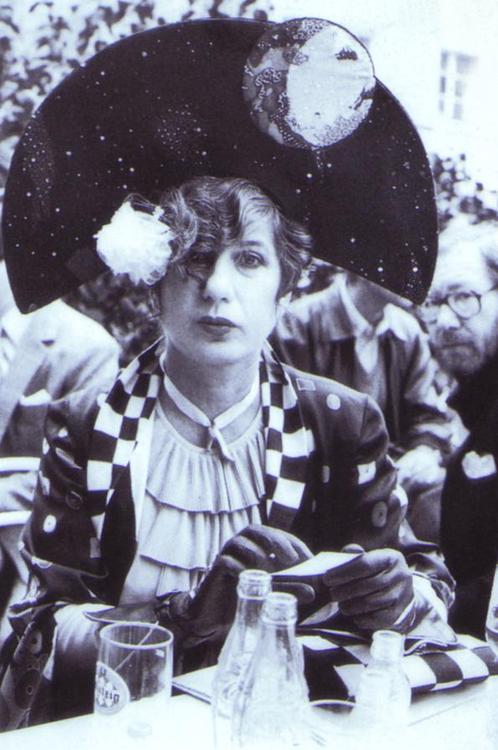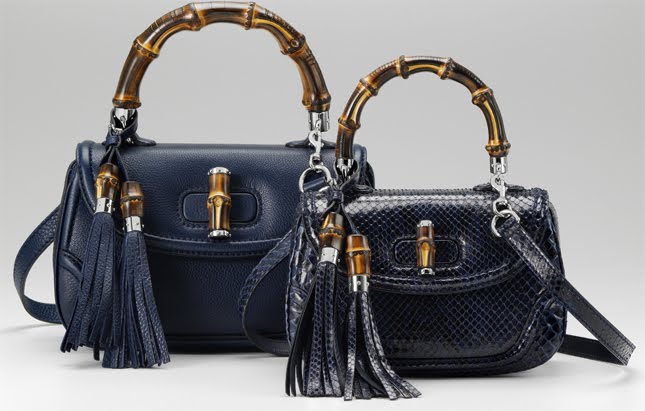Jacket: opened
garment that covers shoulders and waist, used both in menswear and
womenswear.
Its structure consisting
of an outer fabric, internal canvas to give shape to the garment,
shoulder pads, and the silk or synthetic fabric lining. The several
models are distinguished according to the cut and to the fabric they
are made of.
of an outer fabric, internal canvas to give shape to the garment,
shoulder pads, and the silk or synthetic fabric lining. The several
models are distinguished according to the cut and to the fabric they
are made of.
If combined with a pair
of trousers of the same fabric, it is called suit.
of trousers of the same fabric, it is called suit.
If the pants differ in
color or fabric, it is called “spezzato” or simply
“jacket and trousers”.
color or fabric, it is called “spezzato” or simply
“jacket and trousers”.
In womenswear, when matched with a skirt or long pants of the same fabric it is called lady’s suit.
Giacca:
indumento apribile che copre le spalle e la vita, usato sia
nell’abbigliamento maschile sia femminile. La sua struttura è
costituita da un tessuto esterno, una tela interna che serve a dare
la forma all’indumento, le spalline con le varie imbottiture ed
infine la fodera interna di seta o in acrilico. Ad oggi si
distinguono svariati modelli in base alla tipologia di taglio ed al
materiale con cui è realizzata. Abbinata ad un pantalone dello
stesso materiale costituisce un Abito completo.
indumento apribile che copre le spalle e la vita, usato sia
nell’abbigliamento maschile sia femminile. La sua struttura è
costituita da un tessuto esterno, una tela interna che serve a dare
la forma all’indumento, le spalline con le varie imbottiture ed
infine la fodera interna di seta o in acrilico. Ad oggi si
distinguono svariati modelli in base alla tipologia di taglio ed al
materiale con cui è realizzata. Abbinata ad un pantalone dello
stesso materiale costituisce un Abito completo.
Se i pantaloni
differiscono per colore o stoffa allora si parlerà di Abito
spezzato.
differiscono per colore o stoffa allora si parlerà di Abito
spezzato.
In ambito femminile se
abbinata ad una gonna (o pantalone) dello stesso materiale
costituisce un tailleur.
abbinata ad una gonna (o pantalone) dello stesso materiale
costituisce un tailleur.
– Double-breasted,
two breasts (one upon the other) with parallel rows of buttons. A row
needs to close the jacket, while the other has only a decorative
function.
two breasts (one upon the other) with parallel rows of buttons. A row
needs to close the jacket, while the other has only a decorative
function.
– Single-breasted,
single row of buttons. In turn, it can be distinguished in jacket
with one, two, three or more buttons according to the type of lapels
and neckline.
single row of buttons. In turn, it can be distinguished in jacket
with one, two, three or more buttons according to the type of lapels
and neckline.
La giacca può essere:
– doppiopetto,
giacca a petti soprammessi con due file parallele di bottoni. Una
fila serve per chiudere effettivamente la giacca, mentre l’altra ha
solo funzione decorativa.
giacca a petti soprammessi con due file parallele di bottoni. Una
fila serve per chiudere effettivamente la giacca, mentre l’altra ha
solo funzione decorativa.
– monopetto,
abbottonatura frontale con un’unica fila di bottoni. A sua volta si
può distinguere in giacca ad uno, due, tre o più bottoni in base
alla tipologia di risvolto (revers) e collo.
abbottonatura frontale con un’unica fila di bottoni. A sua volta si
può distinguere in giacca ad uno, due, tre o più bottoni in base
alla tipologia di risvolto (revers) e collo.
Its origins date back to
1600, as a smock to protect clothes from the attacks of weapons in
France for the Hundred Years War, during the “Revolt of the
peasants”. The term jacket comes from Jacques (James), a
very common name among the French peasantry.Since the end of the
XVIII century, in London and in the Southern Italy there were the
most important tailors of all Europe. The difference between the
two schools was (and still is) the construction of the shoulder.
The English one is squared and prominent, the Neapolitan one is
softer and rounded. Furthermore, the English silhouette is longer
with high waist, while the Italian tailors prefer a more slim
fitting.
1600, as a smock to protect clothes from the attacks of weapons in
France for the Hundred Years War, during the “Revolt of the
peasants”. The term jacket comes from Jacques (James), a
very common name among the French peasantry.Since the end of the
XVIII century, in London and in the Southern Italy there were the
most important tailors of all Europe. The difference between the
two schools was (and still is) the construction of the shoulder.
The English one is squared and prominent, the Neapolitan one is
softer and rounded. Furthermore, the English silhouette is longer
with high waist, while the Italian tailors prefer a more slim
fitting.
In the 80’s Giorgio
Armani revolutionized more than two hundred years of masculine
tailoring history by removing the paddings, moving the buttons and
re-studying the traditional proportions to create his famous
“deconstructed jackets”, designed for men, but also for
the lady’s suits of the new emerging business women.
Armani revolutionized more than two hundred years of masculine
tailoring history by removing the paddings, moving the buttons and
re-studying the traditional proportions to create his famous
“deconstructed jackets”, designed for men, but also for
the lady’s suits of the new emerging business women.
Le sue origini
risalgono al 1600, come sopraveste per proteggere i vestiti dagli
attacchi delle armi in Francia per la Guerra dei Cento Anni, durante
la “rivolta dei contadini”. Il termine giacca infatti deriva da
Jacques, nome molto comune tra i contadini francesi. Sin dalla fine
del XVIII secolo le principali sartorie e relative scuole di pensiero
che si svilupparono in Europa furono quella inglese e quella
italiana. La differenza tra le due sartorie sta nella costruzione
della spalla: quella inglese è squadrata e sporgente, quella
napoletana è morbida e arrotondata. Inoltre la silhouette
inglese è più lunga e a vita alta, mentre la sartoria italiana
prevede fitting più asciutti. Sarà Giorgio Armani che negli
anni ottanta riuscirà a rivoluzionare più di duecento anni di
storia della sartoria maschile eliminando le imbottiture,
spostando i bottoni e ristudiando le proporzioni tradizionali per
creare le sue famose giacche destrutturate, pensate per l’uomo,
ma anche per i tailleur delle nuove business women.
risalgono al 1600, come sopraveste per proteggere i vestiti dagli
attacchi delle armi in Francia per la Guerra dei Cento Anni, durante
la “rivolta dei contadini”. Il termine giacca infatti deriva da
Jacques, nome molto comune tra i contadini francesi. Sin dalla fine
del XVIII secolo le principali sartorie e relative scuole di pensiero
che si svilupparono in Europa furono quella inglese e quella
italiana. La differenza tra le due sartorie sta nella costruzione
della spalla: quella inglese è squadrata e sporgente, quella
napoletana è morbida e arrotondata. Inoltre la silhouette
inglese è più lunga e a vita alta, mentre la sartoria italiana
prevede fitting più asciutti. Sarà Giorgio Armani che negli
anni ottanta riuscirà a rivoluzionare più di duecento anni di
storia della sartoria maschile eliminando le imbottiture,
spostando i bottoni e ristudiando le proporzioni tradizionali per
creare le sue famose giacche destrutturate, pensate per l’uomo,
ma anche per i tailleur delle nuove business women.
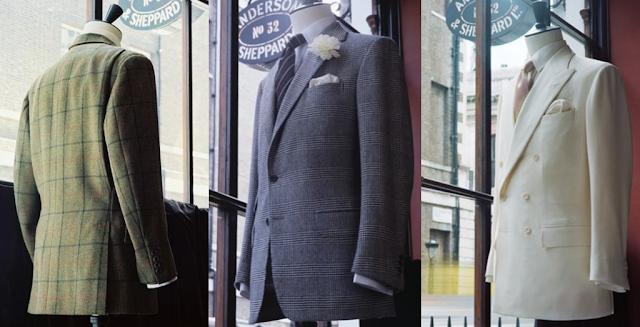 |
| Anderson & Sheppard – London |
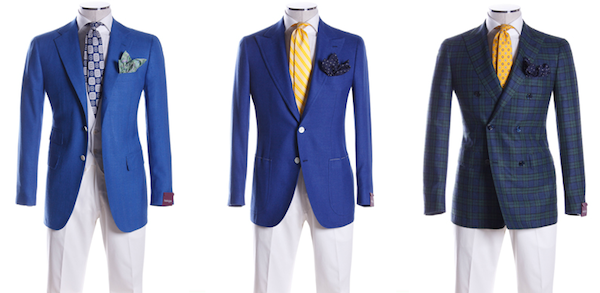 |
| Sartoria Partenopea – Napoli |






